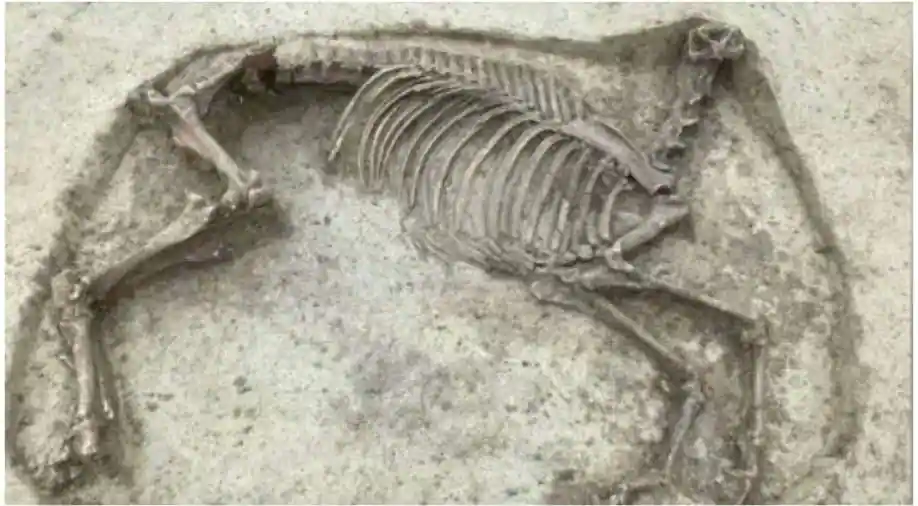
Archeologists discovered 1,400-year-old remains of a headless horse and its rider. However, the mystery of why the horse was decapitated is unanswered.
Headless horse and rider’s remains discovered
The skeletal remains of a man were found in Germany, buried next to a headless horse. The remains are 1,400 years old and were discovered at an ancient cemetery in Knittlingen a town in southern Germany. The man and the headless horse were buried during the Merovingian dynasty (A.D. 476–750). Archeologists believe the man was the hose’s rider or owner and likely served the kings. “He stood in a ‘chain of command’ with the Merovingian kings on its top, which meant he was obliged to participate in the king’s campaigns,” stated Folke Damminger.
Damminger is an archeologist in charge of excavations and research at the site. “As a member of the local elite, he most probably was the head of a farming household consisting of his family and his servants,” he added. However, it does not look like he was a farmer in the conventional sense. As Damminger believes that “other workers may have done much of the actual farming”.
Why was the man buried near a headless horse?
A correct answer to this question is unknown. However, archeologists assume “most probably the decapitation [of the horse] was part of the burial ceremony”. The headless horse may have been placed by the owner as a ‘grave good’. It acts as a protector in the afterlife and is much more than a sacrifice. So far, the whereabouts of the horse’s head are unknown. The researchers will continue to investigate the case and excavate more burials to better understand the culture of the time.
Additionally, his family may have used it to portray his wealth and importance. “One function of this ceremony was the ‘staging’ of the deceased in his former status and wealth as a claim of his successors to maintain this status,” explained Damminger. In the vicinity, archeologists also discovered the remains of several other people who lived around the same time as the rider. Some of them were buried with wealthy grave goods such as golden brooch while others were buried with weapons.






